Therapeutic patient education and exercise therapy in patients with cervicogenic dizziness: a prospective case series clinical study
- PMID: 27419118
- PMCID: PMC4934967
- DOI: 10.12965/jer.1632564.282
Therapeutic patient education and exercise therapy in patients with cervicogenic dizziness: a prospective case series clinical study
Abstract
The purpose of this study was to evaluate the effectiveness of a treatment for patients with cervicogenic dizziness that consisted of therapeutic education and exercises. The Dizziness Handicap Inventory and Neck Disability Index were used. Secondary outcomes included range of motion, postural control, and psychological variables. Seven patients (two males and five females) aged 38.43±14.10 with cervicogenic dizziness were included. All the participants received eight treatment sessions. The treatment was performed twice a week during a four weeks period. Outcome measures included a questionnaire (demographic data, body chart, and questions about pain) and self-reported disability, pain, and psychological variables. Subjects were examined for cervical range of motion and postural control. All of these variables were assessed pre- and postintervention. Participants received eight sessions of therapeutic education patient and therapeutic exercise. The majority of participants showed an improvement in catastrophism (mean change, 11.57±7.13; 95% confidence interval [CI], 4.96-18.17; d=1.60), neck disability (mean change, 5.14±2.27.28; 95% CI, 3.04-7.24; d=1.32), and dizziness disability (mean change, 9.71±6.96; 95% CI, 3.26-16.15; d=1.01). Patients also showed improved range of motion in the right and left side. Therapeutic patient education in combination with therapeutic exercise was an effective treatment. Future research should investigate the efficacy of therapeutic patient education and exercise with larger sample sizes of patients with cervicogenic dizziness.
Keywords: Cervicogenic dizziness; Dizziness handicap inventory; Education; Neck disability index; Therapeutic exercise.
Figures



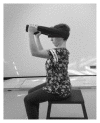



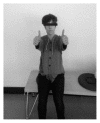
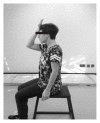

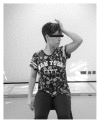
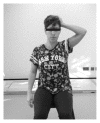
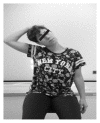
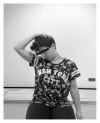
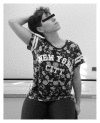


Similar articles
-
The effect of normalizing the sagittal cervical configuration on dizziness, neck pain, and cervicocephalic kinesthetic sensibility: a 1-year randomized controlled study.Eur J Phys Rehabil Med. 2017 Feb;53(1):57-71. doi: 10.23736/S1973-9087.16.04179-4. Epub 2016 Aug 30. Eur J Phys Rehabil Med. 2017. PMID: 27575013 Clinical Trial.
-
The efficacy of self-exercise in a patient with cervicogenic dizziness: A randomized controlled trial.Front Neurol. 2023 Feb 14;14:1121101. doi: 10.3389/fneur.2023.1121101. eCollection 2023. Front Neurol. 2023. PMID: 36864911 Free PMC article.
-
Postural and clinical outcomes of sustained natural apophyseal glides treatment in cervicogenic dizziness patients: A randomised controlled trial.Clin Rehabil. 2021 Nov;35(11):1566-1576. doi: 10.1177/02692155211012413. Epub 2021 Apr 26. Clin Rehabil. 2021. PMID: 33896213 Clinical Trial.
-
The use of dry needling as a diagnostic tool and clinical treatment for cervicogenic dizziness: a narrative review & case series.J Bodyw Mov Ther. 2018 Oct;22(4):947-955. doi: 10.1016/j.jbmt.2018.02.015. Epub 2018 Feb 17. J Bodyw Mov Ther. 2018. PMID: 30368340 Review.
-
Cervicogenic dizziness: a review of diagnosis and treatment.J Orthop Sports Phys Ther. 2000 Dec;30(12):755-66. doi: 10.2519/jospt.2000.30.12.755. J Orthop Sports Phys Ther. 2000. PMID: 11153554 Review.
Cited by
-
Patient-reported outcomes measured with and without dizziness associated with non-specific chronic neck pain: implications for primary care.PeerJ. 2019 Aug 7;7:e7449. doi: 10.7717/peerj.7449. eCollection 2019. PeerJ. 2019. PMID: 31410311 Free PMC article.
-
Proprioceptive Cervicogenic Dizziness: A Narrative Review of Pathogenesis, Diagnosis, and Treatment.J Clin Med. 2022 Oct 26;11(21):6293. doi: 10.3390/jcm11216293. J Clin Med. 2022. PMID: 36362521 Free PMC article. Review.
-
Effect of Combined Manual Therapy and Therapeutic Exercise Protocols on the Postural Stability of Patients with Non-Specific Chronic Neck Pain. A Secondary Analysis of Randomized Controlled Trial.J Clin Med. 2021 Dec 24;11(1):84. doi: 10.3390/jcm11010084. J Clin Med. 2021. PMID: 35011823 Free PMC article.
-
The Bárány Society position on 'Cervical Dizziness'.J Vestib Res. 2022;32(6):487-499. doi: 10.3233/VES-220202. J Vestib Res. 2022. PMID: 36404562 Free PMC article.
-
Approach to cervicogenic dizziness: a comprehensive review of its aetiopathology and management.Eur Arch Otorhinolaryngol. 2018 Oct;275(10):2421-2433. doi: 10.1007/s00405-018-5088-z. Epub 2018 Aug 9. Eur Arch Otorhinolaryngol. 2018. PMID: 30094486 Review.
References
-
- Aasa B, Berglund L, Michaelson P, Aasa U. Individualized low-load motor control exercises and education versus a high-load lifting exercise and education to improve activity, pain intensity, and physical performance in patients with low back pain: a randomized controlled trial. J Orthop Sports Phys Ther. 2015;45:77–85. B1–4. - PubMed
-
- Andrade Ortega JA, Delgado Martínez AD, Almécija Ruiz R. Validation of the Spanish version of the Neck Disability Index. Spine (Phila Pa 1976) 2010;35:E114–118. - PubMed
-
- Audette I, Dumas JP, Côté JN, De Serres SJ. Validity and between-day reliability of the cervical range of motion (CROM) device. J Orthop Sports Phys Ther. 2010;40:318–323. - PubMed
LinkOut - more resources
Full Text Sources
Other Literature Sources
Medical

